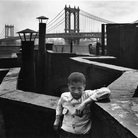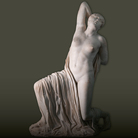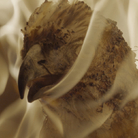I pomeriggi 2021/2022 - La Creazione dell’Antichità nel Rinascimento

Domus Aurea
Dal 14 January 2022 al 14 January 2022
Roma
Luogo: Istituto Svizzero e online
Indirizzo: Via Liguria 20
Orari: ore 18:30-20:00. Registrazione sul sito alla pagina dell'evento
Curatori: Mathilde Jaccard
Costo del biglietto: L’ingresso è consentito esclusivamente ai soggetti con certificazione verde COVID-19 (Green Pass rafforzato)
Sito ufficiale: http://www.istitutosvizzero.it
L’antichità non fu solo imitata o copiata durante il Rinascimento. Fu plasmata secondo un ideale o un’agenda politica. La rappresentazione dell’Antichità non corrispondeva alla realtà archeologica, ma era un’invenzione come proiezione.
La tavola rotonda esplorerà queste questioni, concentrandosi su alcuni interrogativi. In primo luogo, non tutte le epoche e i tipi di antichità sono state fonte di ispirazione. Quale tipo di antichità fu usato da quale tipo di Rinascimento? In secondo luogo, in quale misura le scoperte hanno influito sull’arte? Sebbene durante il Rinascimento ci fosse la consapevolezza della separazione temporale tra quei tempi e l’Antichità, c’era anche il desiderio di cancellare qualsiasi segno del passaggio del tempo. Come coesistevano passato e presente? Quanto era importante la nozione di falsificazione?
Partecipanti:
Claudia Cieri Via (Sapienza Università di Roma) è professoressa ordinaria alla Sapienza Università di Roma in Storia e Teoria dell’Arte presso il Dipartimento di Storia dell’Arte dal 2009, Senior Research Fellows presso la Scuola Superiore della Critica d’Arte della Sapienza dal 2012. È stata Visiting Professor in molte università, come l’Université Paris 1 Panthéon-Sorbonne (2000) o la Northwestern University di Chicago (2001-2007). Ha dedicato parte della sua ricerca alle Metamorfosi di Ovidio come alla mitologia nelle arti, il che ha portato al progetto ICONOS, un database on-line, e alla pubblicazione, tra gli altri, del volume L’arte delle Metamorfosi: Decorazioni mitologiche nel Cinquecento(2003). Ha scritto su diversi artisti, tra cui Piero di Cosimo, Andrea Mantegna e Leonardo da Vinci. È anche autrice di numerose pubblicazioni sull’opera di Aby Warburg e sulle sue reminiscenze al giorno d’oggi. Tra i suoi ultimi progetti vi è la mostra Venere Divina: Armonia sulla terra al Palazzo del Te di Mantova (2021).
Marco Brunetti (Bibliotheca Hertziana) è un PostDoc Fellow che lavora sui disegni rinascimentali di antichità romane e sulla topografia rinascimentale di Roma. Ha studiato Lettere Classiche, Filologia Classica e Archeologia Classica all’Università di Bologna. Dopo una Scuola di Specializzazione in Archeologia e Archivistica (2016), ha difeso la sua tesi di dottorato sui disegni rinascimentali della Domus Aurea, con un focus specifico sulla Volta Dorata, presso l’IMT-Lucca nel 2020. La sua ultima pubblicazione è un articolo nei Papers of the British School at Rome, Philip II of Spain and Trajan: History of a special undelivered gift and of the Reception of Trajan’s column (2021).
Mathilde Jaccard (Università di Ginevra/Istituto Svizzero) è dottoranda nell’ambito del progetto SNSF Restoration as Fabrication of Origins (2019-2023). Ha conseguito un Bachelor of Arts in storia dell’arte e antropologia culturale presso l’Università di Basilea (2017). Ha difeso la sua tesi di Master sotto la supervisione del Prof. Victor Stoichita all’Università di Friburgo (2019). La sua ricerca attuale si concentra sul patrimonio etrusco in Toscana durante i secoli XV e XVI: ciò ha portato alla pubblicazione di un articolo sulla rivista Anabases, De Déjanire à Vénus: à propos du réemploi d’un modèle en faux antique étrusque (2021).
La tavola rotonda esplorerà queste questioni, concentrandosi su alcuni interrogativi. In primo luogo, non tutte le epoche e i tipi di antichità sono state fonte di ispirazione. Quale tipo di antichità fu usato da quale tipo di Rinascimento? In secondo luogo, in quale misura le scoperte hanno influito sull’arte? Sebbene durante il Rinascimento ci fosse la consapevolezza della separazione temporale tra quei tempi e l’Antichità, c’era anche il desiderio di cancellare qualsiasi segno del passaggio del tempo. Come coesistevano passato e presente? Quanto era importante la nozione di falsificazione?
Partecipanti:
Claudia Cieri Via (Sapienza Università di Roma) è professoressa ordinaria alla Sapienza Università di Roma in Storia e Teoria dell’Arte presso il Dipartimento di Storia dell’Arte dal 2009, Senior Research Fellows presso la Scuola Superiore della Critica d’Arte della Sapienza dal 2012. È stata Visiting Professor in molte università, come l’Université Paris 1 Panthéon-Sorbonne (2000) o la Northwestern University di Chicago (2001-2007). Ha dedicato parte della sua ricerca alle Metamorfosi di Ovidio come alla mitologia nelle arti, il che ha portato al progetto ICONOS, un database on-line, e alla pubblicazione, tra gli altri, del volume L’arte delle Metamorfosi: Decorazioni mitologiche nel Cinquecento(2003). Ha scritto su diversi artisti, tra cui Piero di Cosimo, Andrea Mantegna e Leonardo da Vinci. È anche autrice di numerose pubblicazioni sull’opera di Aby Warburg e sulle sue reminiscenze al giorno d’oggi. Tra i suoi ultimi progetti vi è la mostra Venere Divina: Armonia sulla terra al Palazzo del Te di Mantova (2021).
Marco Brunetti (Bibliotheca Hertziana) è un PostDoc Fellow che lavora sui disegni rinascimentali di antichità romane e sulla topografia rinascimentale di Roma. Ha studiato Lettere Classiche, Filologia Classica e Archeologia Classica all’Università di Bologna. Dopo una Scuola di Specializzazione in Archeologia e Archivistica (2016), ha difeso la sua tesi di dottorato sui disegni rinascimentali della Domus Aurea, con un focus specifico sulla Volta Dorata, presso l’IMT-Lucca nel 2020. La sua ultima pubblicazione è un articolo nei Papers of the British School at Rome, Philip II of Spain and Trajan: History of a special undelivered gift and of the Reception of Trajan’s column (2021).
Mathilde Jaccard (Università di Ginevra/Istituto Svizzero) è dottoranda nell’ambito del progetto SNSF Restoration as Fabrication of Origins (2019-2023). Ha conseguito un Bachelor of Arts in storia dell’arte e antropologia culturale presso l’Università di Basilea (2017). Ha difeso la sua tesi di Master sotto la supervisione del Prof. Victor Stoichita all’Università di Friburgo (2019). La sua ricerca attuale si concentra sul patrimonio etrusco in Toscana durante i secoli XV e XVI: ciò ha portato alla pubblicazione di un articolo sulla rivista Anabases, De Déjanire à Vénus: à propos du réemploi d’un modèle en faux antique étrusque (2021).
SCARICA IL COMUNICATO IN PDF
COMMENTI

-
 Dal 2 December 2025 al 19 February 2026
Milano | Centro Culturale di Milano
Dal 2 December 2025 al 19 February 2026
Milano | Centro Culturale di Milano
Walter Rosenblum. Il mondo e la tenerezza
-
 Dal 30 November 2025 al 12 April 2026
Gallarate | Museo MA*GA
Dal 30 November 2025 al 12 April 2026
Gallarate | Museo MA*GA
Kandinsky e l’Italia
-
 Dal 29 November 2025 al 12 April 2026
Roma | Musei Capitolini
Dal 29 November 2025 al 12 April 2026
Roma | Musei Capitolini
La Grecia a Roma
-
 Dal 22 November 2025 al 3 May 2026
Torino | Sale Chiablese dei Musei Reali
Dal 22 November 2025 al 3 May 2026
Torino | Sale Chiablese dei Musei Reali
Orazio Gentileschi. Un pittore in viaggio
-
 Dal 20 November 2025 al 25 January 2026
Firenze | Palazzo Strozzi
Dal 20 November 2025 al 25 January 2026
Firenze | Palazzo Strozzi
Andro Eradze. Bones of Tomorrow
-
 Dal 21 November 2025 al 28 March 2026
Cuneo | Complesso Monumentale di San Francesco
Dal 21 November 2025 al 28 March 2026
Cuneo | Complesso Monumentale di San Francesco
La Galleria Borghese. Da Raffaello a Bernini. Storia di una collezione


